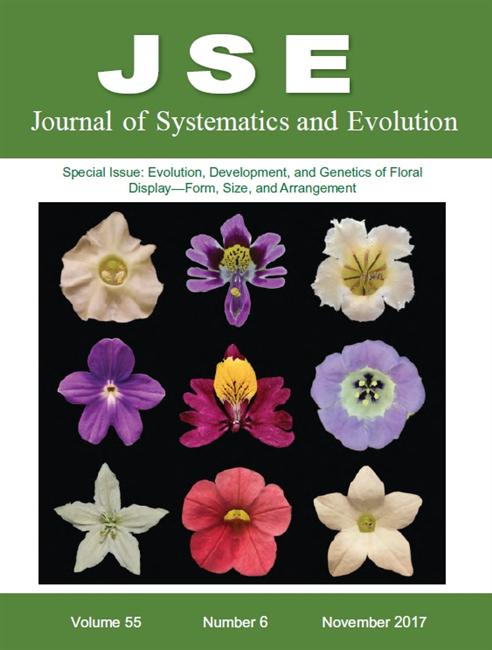Jean M. Gerrath, Usher Posluszny, Stefanie M. Ickert-Bond, Jun Wen
This review summarizes inflorescence developmental morphology in the grape order Vitales within a phylogenetic context. Inflorescences in the shrubby Leeaceae are terminal thyrses that appear leaf-opposed once renewal growth begins. Plants of the Vitaceae are mainly tendrilled lianas and form five well-defined clades. Inflorescences develop from the unique, non-leafy, uncommitted primordium which arises opposite a leaf on the flank of the shoot apical meristem, and may mature into an inflorescence, tendril, or a combination of the two. The Ampelopsis-Rhoicissus clade, Cissus antarctica group and Yua have a tendril/inflorescence, with cymose branching on the inflorescence axis. Inflorescences in the core Cissus clade and Cyphostemma-Tetrastigma clade arise on a compressed axillary shoot, and leaf-opposed tendrils arise on the main shoot, resulting in different branch orders. In Parthenocissus, tendrils are leaf-opposed on long shoots, and inflorescences are leaf-opposed on axillary branches on short shoots. In the Ampelocissus-Vitis clade, the leaf-opposed tendrils and thyrse inflorescences are of the same branching order, and are often combined. Terminal inflorescences such as in Leeaceae are common in angiosperms, in contrast to the unique leaf-opposed tendril/inflorescence of Vitaceae. The further separation of the tendrils and inflorescences onto different orders of branching (core Cissus, Cyphostemma-Tetrastigma), or separate short and long shoots (Parthenocissus), have allowed each component to optimize its own function. The Ampelocissus-Vitis clade, however, has returned to a thyrse inflorescence, which may allow for larger or unusual lamellate inflorescences (Pterisanthes), and has reunited tendrils and inflorescences. Thus, each clade has developed its own set of inflorescence morphology.

